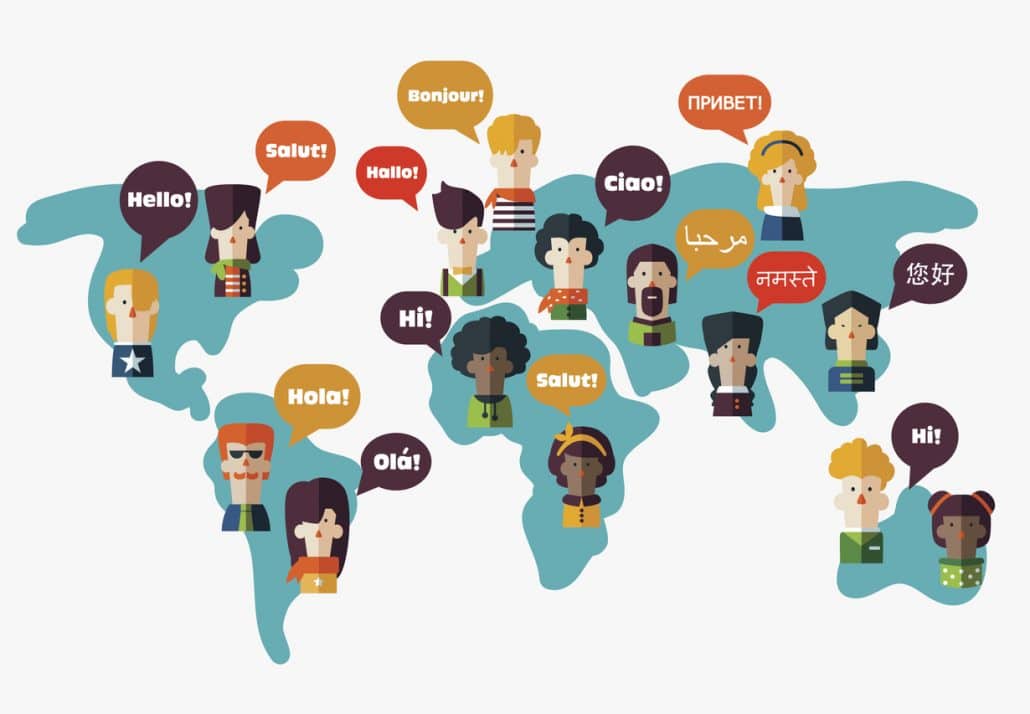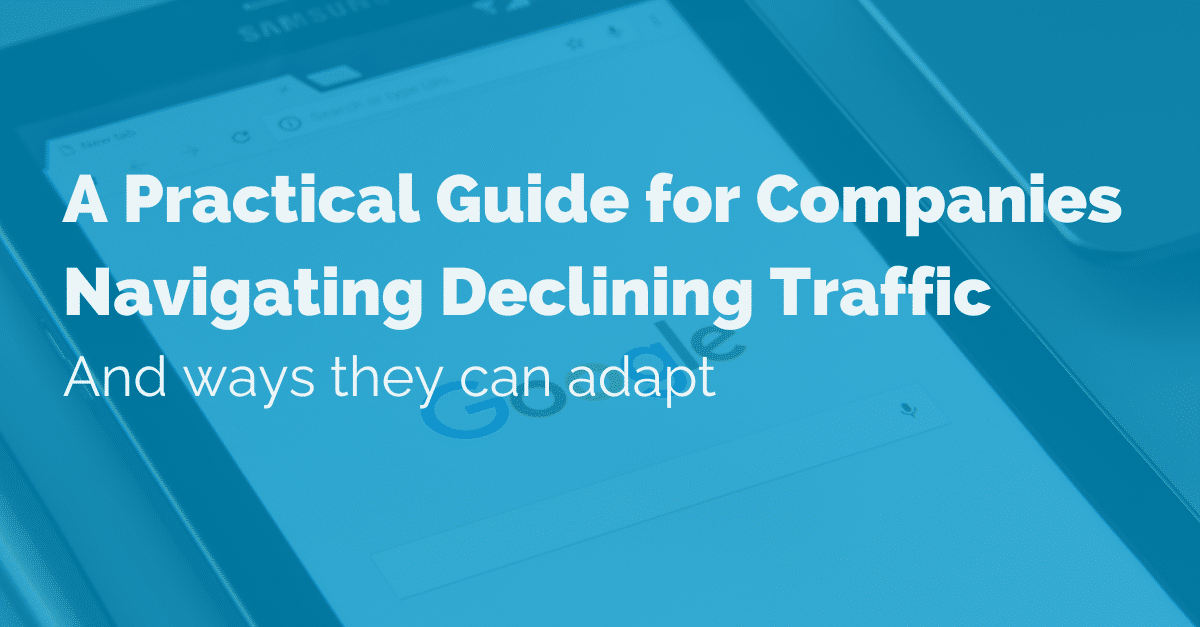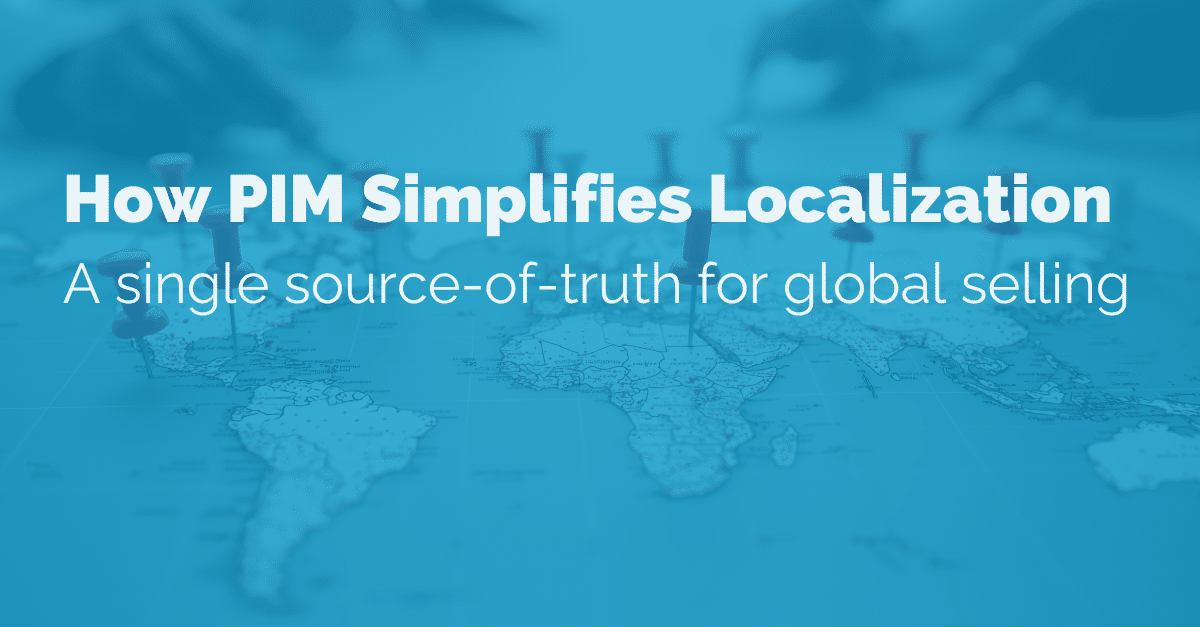Key Takeaways

- Localization is more than translation — it’s tailoring every aspect of your product data to meet cultural, regulatory, and linguistic expectations.
- A centralized PIM automates localization workflows, ensuring accuracy and consistency across all markets and sales channels.
- With the right PIM, brands can accelerate international expansion and enhance the customer experience by serving fully localized content everywhere.
What Is Localization?
Localization is the process of adapting your product content to meet the specific needs of different regions or locales. It goes beyond simple translation to include formatting (dates, units of measure, currencies), imagery, cultural references, and regulatory information.

For example, a product listed as “color: gray” in the U.S. might need to read “colour: grey” in the UK — while in Japan, it might need an entirely different SKU code, safety certification, or packaging dimension to meet compliance.
Localization ensures that every product detail resonates with the target audience’s expectations, all while maintaining accuracy and compliance across systems.
Use Cases
- Global retail expansion: A fashion brand entering European markets can automatically localize size charts, currencies, and seasonal product names.
- Regulatory compliance: A food manufacturer must adapt ingredient lists, allergen information, and nutritional data to align with regional labeling laws.
- Cultural alignment: A tech retailer adjusts imagery, descriptions, and promotional tone to match each region’s marketing norms.
In short, localization allows brands to deliver personalized, trustworthy experiences to global customers — and to do so efficiently at scale.
Why Localization Matters for eCommerce and Manufacturers
Challenge #1: Scaling Content Across Markets
As companies expand, managing hundreds or even thousands of SKUs across multiple locales becomes overwhelming. Each product variant may require localized data for:
-
Product names and descriptions
-
Specifications and measurements
-
Pricing and taxes
-
Regulatory compliance and certifications
Doing this manually is prone to delays, errors, and inconsistencies. It’s also costly, especially when localization involves multiple teams and external translation services.
Solution: Centralized Product Information Management
With a PIM for localization, brands can manage every piece of product content from a single hub. Rather than juggling spreadsheets, regional databases, and agency submissions, a PIM consolidates product data and streamlines distribution to all channels and languages.
Using Pimberly, for instance, businesses can:
-
Store master product data once and create localized variants automatically.
-
Use workflows to assign translation and approval tasks by region.
-
Integrate with translation APIs or tools like Smartling or Transifex.
-
Automatically update eCommerce sites, marketplaces, and catalogs when localized content changes.
This eliminates the lag between product creation and market launch, ensuring customers always see the right product content — wherever they shop.
Greater Flexibility for Global Commerce Teams
Localization is not just a marketing function — it’s a key driver of operational efficiency. Let’s break down how a PIM like Pimberly supports this transformation.
Key Feature #1: Locale-Specific Data Management
A locale is a defined set of regional attributes — language, currency, units, and formatting conventions — that determine how data is presented. Pimberly allows brands to define custom locales, meaning you can set unique rules for each target market.
For example:
-
Convert measurements automatically (inches → centimeters).
-
Adjust pricing dynamically per currency.
-
Apply region-specific SEO metadata.
These localized datasets ensure that every channel — whether Shopify, Amazon, or BigCommerce — receives content that meets the region’s specific expectations.
Use Case Example: A Multi-Market Electronics Brand
Imagine an electronics manufacturer expanding into Canada, France, and Japan. With Pimberly, their localization process could look like this:

-
Upload product master data once (e.g., specifications, imagery, pricing tiers).
-
Define locale rules for each market (e.g., French translations, metric measurements, yen pricing).
-
Use automation to create regional product variants.
-
Sync those variants instantly to each channel through API integrations.
In hours — not weeks — the company launches fully localized catalogs in all markets, with guaranteed consistency and compliance.
For more on how this type of centralized approach works, learn how Pimberly helps with ERP integration.
Localization and PIM – Why Product Information Matters
Localization relies on precise, adaptable product information. Without centralized data, businesses struggle to maintain quality and consistency as they expand globally.
A Product Information Management system serves as the foundation of effective localization by:
-
Storing multilingual attributes and region-specific data in one system.
-
Tracking content lifecycle — from translation to publication.
-
Ensuring all regional channels pull from a single source of truth.
-
Supporting AI-driven automation for translations and enrichment.

With Pimberly, localization isn’t an afterthought — it’s built into the product lifecycle. Teams can tag, translate, and distribute content simultaneously, enabling faster time-to-market and better global brand cohesion.
For example, Pimberly’s AI-driven modules like CopyAI can assist in automatically generating regional product descriptions that maintain tone and accuracy, while ImageAI adapts visuals for each market’s norms. Together, these capabilities make localization a strategic advantage rather than a logistical burden.
How PIM Enhances Global Expansion Strategy
Expanding internationally requires more than shipping products — it’s about building trust in new markets. A consistent, localized experience signals reliability and professionalism.
Streamlining Compliance and Certification
Different regions enforce unique labeling, documentation, and product data regulations. For example:
-
The EU requires multilingual packaging and Digital Product Passports (DPPs).
-
The U.S. mandates FDA or FTC disclosures for certain products.
-
APAC markets often have unique labeling and import documentation requirements.
A PIM centralizes and updates this regulatory data across SKUs, helping teams stay compliant without manually tracking every change. This becomes especially valuable as Digital Product Passports roll out across Europe — and brands must provide transparent, region-specific product data at scale.
To explore how this aligns with emerging sustainability and traceability requirements, see Pimberly’s insights on the Digital Product Passport initiative.
Boosting Time-to-Market
Localization bottlenecks often delay product launches. By automating translation workflows and distribution, a PIM ensures every product is ready for global release simultaneously. This faster go-to-market translates directly into revenue growth, as international launches no longer depend on manual coordination.
FAQs
Q: What’s the difference between translation and localization?
A: Translation converts text from one language to another. Localization adapts the entire experience — including visuals, formatting, measurements, and context — to make it relevant to each region. It ensures that your product data feels natural, compliant, and culturally aligned.
Q: How does Pimberly handle multiple languages and locales?
A: Pimberly’s platform allows users to define custom locales for each market. Teams can store and edit product attributes by language, connect translation tools via API, and automate synchronization to every sales channel. This ensures every market receives localized, up-to-date product information instantly.
Q: Is localization necessary if I sell only on global marketplaces like Amazon?
A: Yes. Even on global marketplaces, localization improves product discoverability and conversion. Amazon’s algorithm, for example, ranks localized listings higher in regional searches. A PIM ensures that all localized versions of your listings stay synchronized and accurate.
Q: Can AI help with product localization?
A: Absolutely. AI-powered features like Pimberly’s Copy AI can automatically generate multilingual product descriptions optimized for each channel. AI also assists with predictive analytics, identifying which localized content drives the most engagement or sales.
Takeaways for Global eCommerce Managers Investing in Localization
To summarize: localization is no longer optional — it’s essential for competing in today’s interconnected world. Customers expect brands to speak their language, comply with local standards, and reflect their culture authentically.
By combining centralized product data, automated workflows, and AI-driven localization tools, PIM solutions like Pimberly empower businesses to:
-
Deliver accurate, market-ready product data everywhere.
-
Shorten international launch cycles.
-
Enhance brand trust and global visibility.
For eCommerce managers, the next step is clear: invest in a PIM that scales with your global ambitions.















